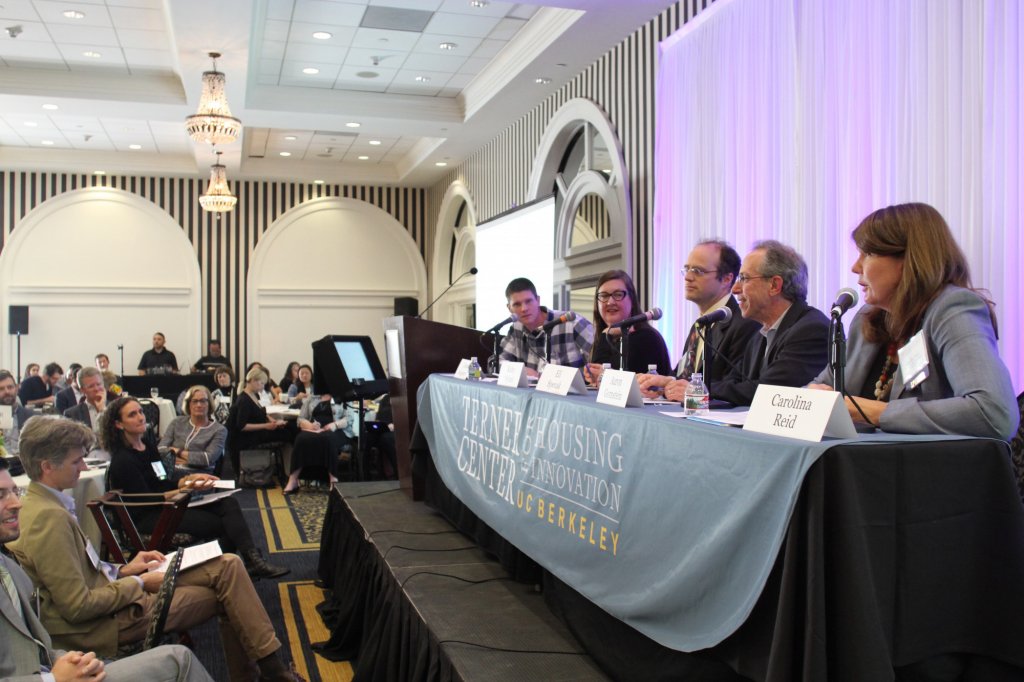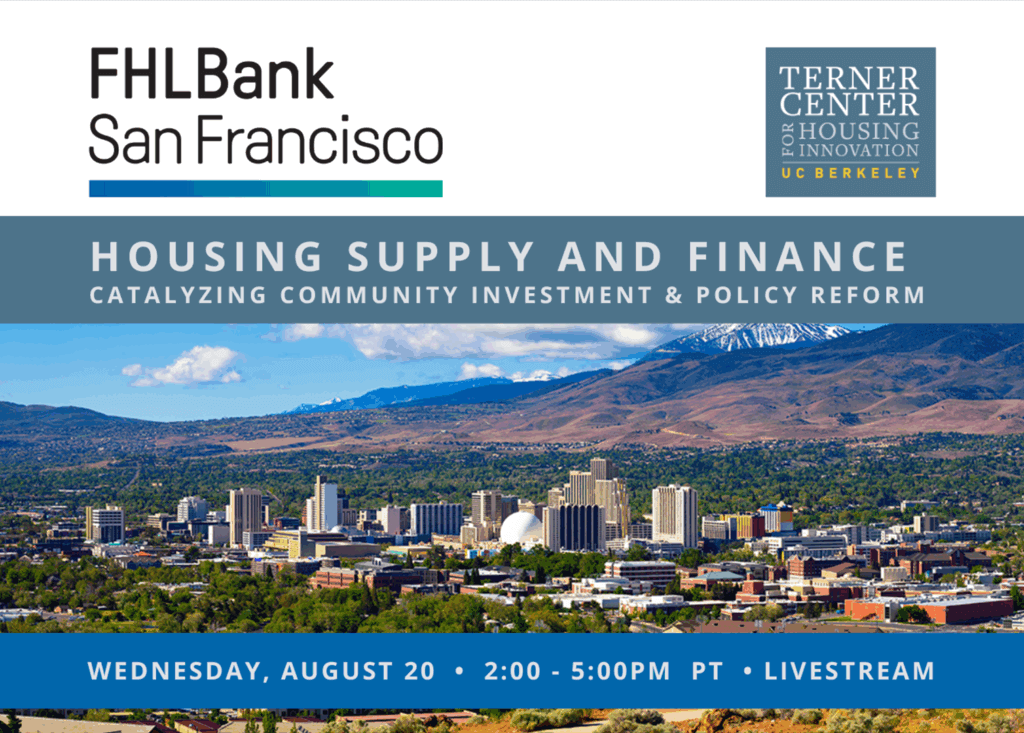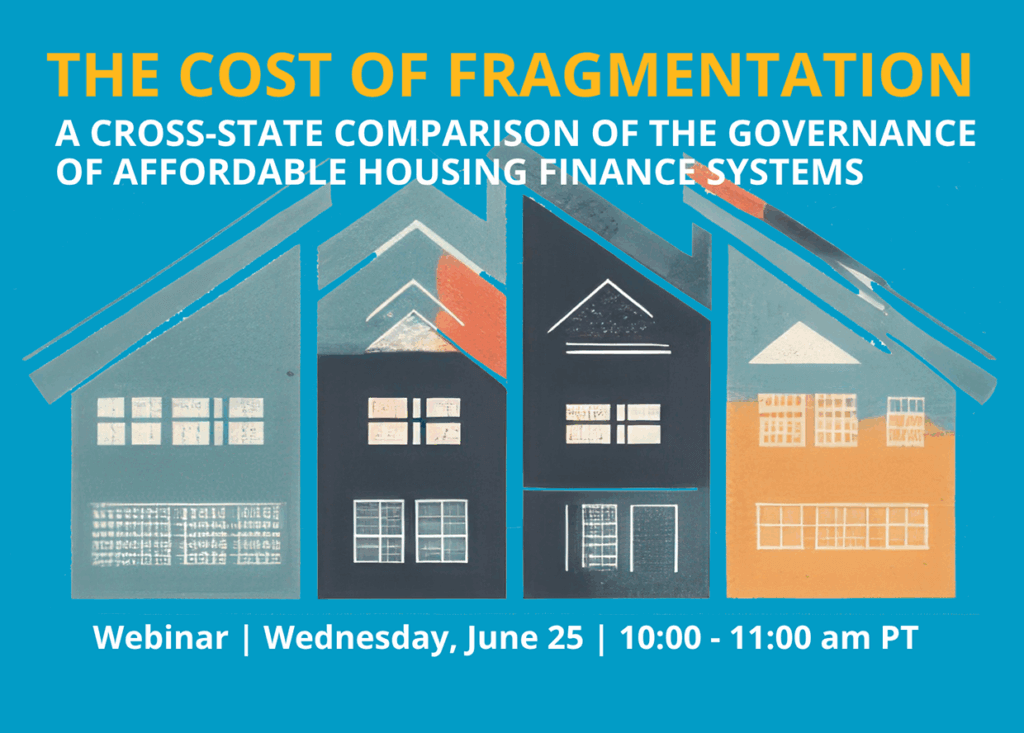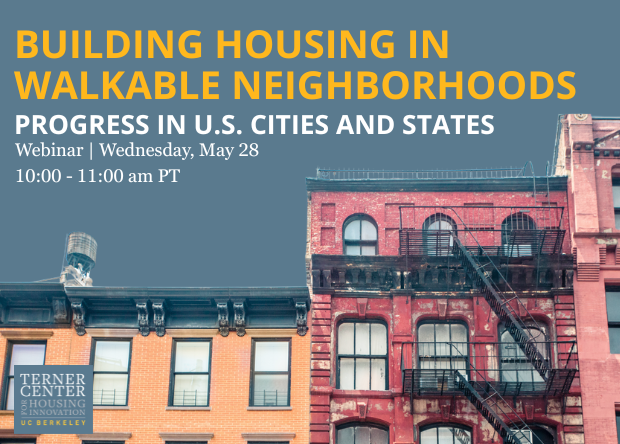Highlights from the Terner Center Promoting Affordability Conference
Published On June 27, 2017
Though U.S. cities like Boston, New York, San Francisco and Los Angeles are important engines of the American economy, their rapid growth in jobs and populations has not been met with a comparable pace of growth in housing. The result? Increasing pressure on both the rental and for-sale housing markets, and skyrocketing costs of living for a larger and larger proportion of the people who live in these cities. On Thursday June 1, the Terner Center hosted a special convening intended to delve into this issue, exploring solutions to that could help expand the supply of housing, lower the cost of production, and promote greater affordability in these dynamic regions.
The premise of our event (as underscored by its hashtag) is that when it comes to housing affordability, the supply of housing matters. It isn’t, however, the only factor affecting costs, and simply building more supply – especially without thought to the type and location of that supply – won’t alone address the complex and urgent affordability challenges in high-cost regions. Nonetheless, it is an important component of the broader challenge, and this event was intended to dive deep into how to increase supply in ways that can meet the needs of people across the income spectrum, while advancing, rather than working at the expense of, equity and environmental goals.
No small task. We convened a group of academics, developers, policymakers, advocates, and journalists, and live-streamed the event across the country, recognizing that to address this problem we need the collaboration and cooperation of many stakeholders and need to promote an array of ideas and actions. Former Secretary of the U.S. Department of Housing and Urban Development and Former Director of the Office of Management and Budget Shaun Donovan and UC Berkeley Professor Enrico Moretti led two keynote sessions framing these challenges from the perspective of a leader in federal government and economist, respectively.
Moretti kicked off the event by framing the mixture of economic and regulatory conditions that have led to a lack of housing affordable to the broad spectrum of the workforce in places like the San Francisco Bay Area. He described the housing supply problem as often self-inflicted; while the region has experienced a rise in innovation and technology jobs, leading to an indirect growth in service jobs to support those growing industries, the regulatory environment in the Bay Area (one of the most stringent in the nation) has made it impossible to build enough housing to meet the increased demand. It doesn’t have to be this way. Other regions in the U.S., he pointed out, have experienced similar or greater job growth without comparable rises in housing costs because they have been more proactive about permitting more building. Moretti called for state intervention to overcome local housing supply constraints, recognizing that housing and job markets are actually regional, and local laws have externalities beyond their borders.
Making the economic argument for more housing supply, Moretti was then followed by Shaun Donovan, who joined our Faculty Director Carol Galante for a fascinating dialogue about the role of the federal government in these issues. Donovan reflected on his time as Secretary of the U.S. Department Housing and Urban Development under President Obama, and in the New York City Department of Housing Preservation and Development, remarking on the differing roles and responsibilities and potential of federal and local policy in addressing housing issues. Like Moretti, he acknowledged the role that higher levels of government can have in encouraging, or even mandating, lower level of governments to advance housing priorities. Donovan also pointed out that federal programs and policies dating back to the creation of the Federal Housing Administration fostered racial discrimination and led to inequities in access to homeownership and wealth creation across racial lines. The federal government, he argued, has an obligation to use its power and resources to address the legacy challenges of these policies.
Following keynotes, speakers from across the housing industry and country participated in three panels squarely focused on solutions. Three key questions shaped these discussions: (1) what is the responsibility of localities beyond the urban core to contribute to the supply of housing, and how can we ensure housing is produced across high cost regions? (2) Given the numerous cost and regulatory hurdles new housing construction faces, what are some ways to increase the feasibility, and decrease the cost of new housing supply? And, (3) what role does, should and can the private sector play in addressing these challenges – what kind of design innovations can lower the cost of housing?
Speakers across the three sessions explored the importance of, and challenges associated with, addressing equity concerns; environmental protection and climate goals; local autonomy versus state and regional mandates; existing zoning and planning laws; and private versus public resources and leadership when seeking to expand supply.
Panelists brought a diversity of innovative solutions to the table. Some were examples of programs that were the first of their kind, but many were not. As Shaun Donovan said in his remarks, “Innovation isn’t something that happens when a light bulb goes off, it’s what happens when people beg, borrow, or steal ideas and adapt them to their local communities.” The question, as many speakers highlighted, is not always “what haven’t we thought of?” but rather “which solutions will translate from one jurisdiction, policy environment, and set of market conditions to another?”
This is sometimes difficult to say, as Terner Center Faculty Research Advisor Carolina Reid pointed out, when there is a lack of understanding of current conditions due to limited, poor, or dated data and analysis about things like the rental market. Nat Decker, UC Berkeley PhD student and Graduate Student Researcher with the Terner Center pointed to our Housing Development Dashboard as one way this issue is being addressed, and as the type of innovation that could scale for regions across the country. Meanwhile, both Dr. Reid and Aaron Gornstein, President and CEO of Preservation for Affordable Housing, discussed Chapter 40B, state level legislation which successfully streamlined the housing approval process and expanded affordable housing production in Massachusetts, and could have similar effects if operationalized in California.
In other cases, when it comes to innovation solutions, sometimes it is simply a matter of enforcing good laws and policies that already exist, or focusing on those that need updating or revision. California’s Regional Housing Needs Assessment, the California Environmental Quality Act, and current zoning codes came up as examples.
And sometimes, a combination of policy changes, updates, and new ideas are what is needed. Eli Spevak, Commissioner of Portland Planning and Sustainability Commission, urged cities to consider zoning changes that better accommodate the current demographic profile of households. He reported on the under-utilization of single-family neighborhoods in Portland, commenting that policy changes that would support new types of land use these neighborhoods, such as those that would support the construction of accessory dwelling units, would capitalize on existing buildings instead of relying on larger new projects, thus not requiring a total re-write of single-family residential zoning codes.
No matter which type of policy innovation, they require changes in thinking from policymakers, planners, and citizens. For example, Los Angeles Times reporter Liam Dillon, who moderated a discussion on the challenges and solutions surrounding the feasibility and cost of new housing production, pointed out that the thinking around “environmentalism used to be about stopping things from being built, now it’s about getting things built in particular places.” This shift, though by no means complete or uniform across communities, has begun to happen and reflects evolving understanding and attitude in both government and society more broadly.
In many communities, these shifts in thinking and in policy require engagement, outreach, and coalition-building, all of which Kathy Nyland, Director of Seattle Department of Neighborhoods, acknowledged can take a lot of time and effort but can be essential to “help you cross the finish line.” Mary Tingerthal from the Minnesota Housing Finance Agency discussed the value of pilot programs to demonstrate the “proof of concept” for both citizens and policymakers. She described the effect of rezoning of old retail spaces for mixed-used and multi-family development: one Minnesota community saw the success of one project, they were much more supportive of future projects. She also shared ground breaking analysis Minnesota had done on how to design and zone to optimize cost efficiencies.
Meanwhile, Rachel Flynn of FivePoint Communities encouraged planners to embrace specific plans instead of planning on a project by project basis. Instead of project-by-project planning, this allows planners to better understand impacts to a community, and by concentrating engagement with the community, it can lead to less battles with the community, which will create more certainty for developers.
Outside of policy responses, another way to reduce the cost of housing is to find ways to create housing that is “affordable by design.” Rick Holliday of Holliday Development and Factory_OS, Jeff Wilson of Kasita, Ed Pinto of the American Enterprise Institute, and Sterling Jawitz of Common, all spoke about the need for changes in how we build housing that can lower costs. In particular, modular and industrial fabrication techniques were presented as innovative alternatives to traditional building that can reduce ever-increasing construction costs. The private sector can also demonstrate and thereby teach policymakers which codes or design requirements might be altered to get to “economical” housing, a term coined by Ed Pinto.
The day’s conversations were ranging and dynamic, but ultimately underscored that overcoming the problem of housing supply and affordability will require some very important steps: streamlining of current processes involved in housing development, a check on the influence of special interests, engagement and policy making at every level of government, and a much more robust understanding of baseline conditions and the market drivers of these challenges.
As panelist Paavo Monkkonen reminded us, much of the policy and planning we have in places like California are designed to protect the status quo. But it is obvious that the status quo is not working. The conference showed that many of the innovations needed to reinvent our approach to housing are already in practice, or emerging. Some of those ideas may need further research, development, or experimentation to be adapted and scaled, while others will require political will and thoughtful ways to address both legitimate concerns and misconceptions held by the public. The Terner Center looks forward to continuing to partner with stakeholders from across disciplines to examine these ideas and support their development, advancement, and impact on communities.
To learn more about the conference, please see the event event video, conference program and a resource guide featuring content from our panelists, all available on the event webpage.








